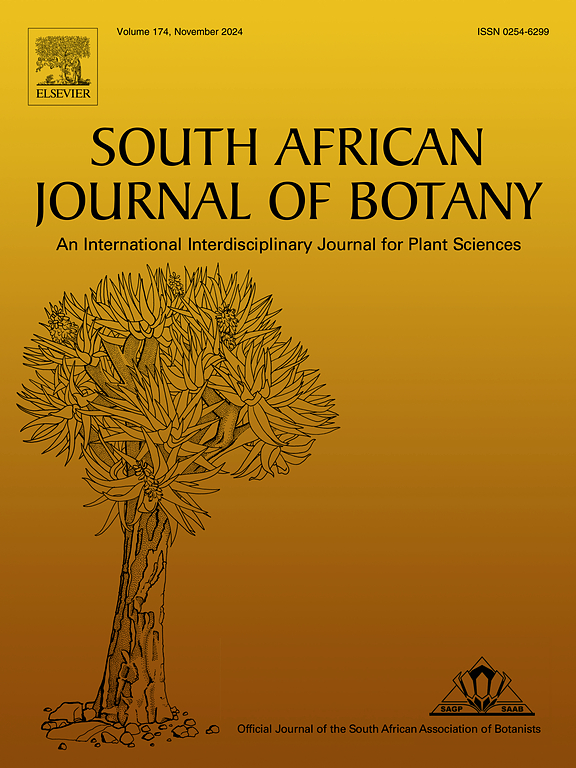Resurrection of Talbotia as a monotypic genus in Velloziaceae
IF 2.7
3区 生物学
Q2 PLANT SCIENCES
引用次数: 0
Abstract
The recognition of Talbotia as a separate genus has been controversial for over 150 years. We have consolidated information available in the literature and added much information that we have gained in the field and from examination of many cultivated specimens. We have compiled a list of 32 characters from the literature and our observations that clearly differentiate Talbotia from Xerophyta and another six characters where there is a small amount of overlap between Talbotia and a minority of species of Xerophyta. Although there are molecular-based phylogenies available for African Velloziaceae, they either include few species or are based on only a single gene region. In the first case, Talbotia is sister to all five included taxa of Xerophyta and in the second case, Talbotia appears to be related to the shrubby species of Xerophyta rather than the herbaceous ones. This may indicate that further investigation based on more species and more gene regions may reveal that additional genera should be recognised to appropriately reflect the relationships between Old World Velloziaceae. In the meanwhile, we are resurrecting Talbotia as this would not render Xerophyta poly- or paraphyletic and so that the large number of differences between Talbotia and Xerophyta are not obscured by its combination with Xerophyta.
木兰花科单型属的复活
承认Talbotia是一个独立的属已经有150多年的争议。我们已经巩固了文献中可用的信息,并增加了我们在实地和从许多栽培标本的检查中获得的许多信息。我们从文献和观察中整理了32个明显区分Talbotia和旱生植物的特征,并在Talbotia和少数旱生植物之间有少量重叠的6个特征。虽然有分子为基础的系统发育可用于非洲Velloziaceae,它们要么包括很少的物种,要么只基于单一基因区域。在第一个案例中,Talbotia是所有五个旱生植物分类群的姐妹,在第二个案例中,Talbotia似乎与旱生植物的灌木物种有关,而不是草本物种。这可能表明,在更多的物种和更多的基因区域的基础上,进一步的研究可能会揭示出更多的属,以适当地反映旧大陆鹿茸科之间的关系。与此同时,我们复活了Talbotia,因为这不会使旱生植物成为多生或副生植物,因此Talbotia和旱生植物之间的大量差异不会被它与旱生植物的结合所掩盖。
本文章由计算机程序翻译,如有差异,请以英文原文为准。
求助全文
约1分钟内获得全文
求助全文
来源期刊

South African Journal of Botany
生物-植物科学
CiteScore
5.20
自引率
9.70%
发文量
709
审稿时长
61 days
期刊介绍:
The South African Journal of Botany publishes original papers that deal with the classification, biodiversity, morphology, physiology, molecular biology, ecology, biotechnology, ethnobotany and other botanically related aspects of species that are of importance to southern Africa. Manuscripts dealing with significant new findings on other species of the world and general botanical principles will also be considered and are encouraged.
 求助内容:
求助内容: 应助结果提醒方式:
应助结果提醒方式:


